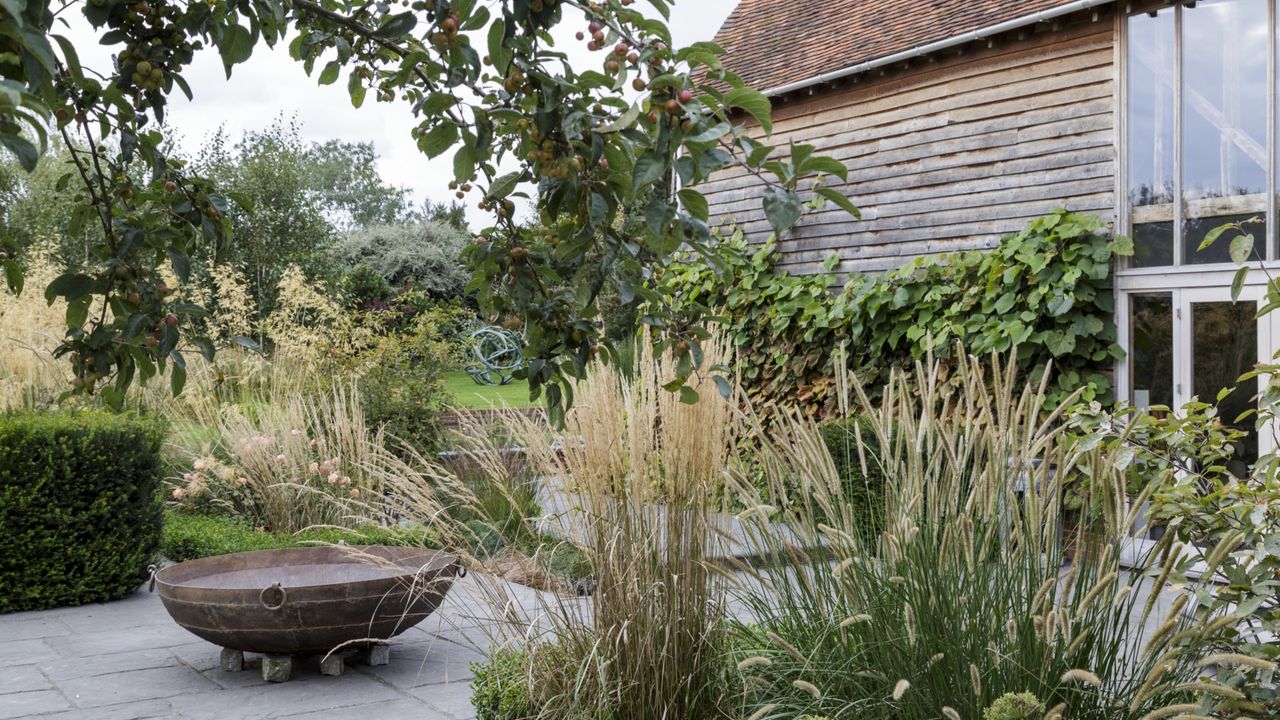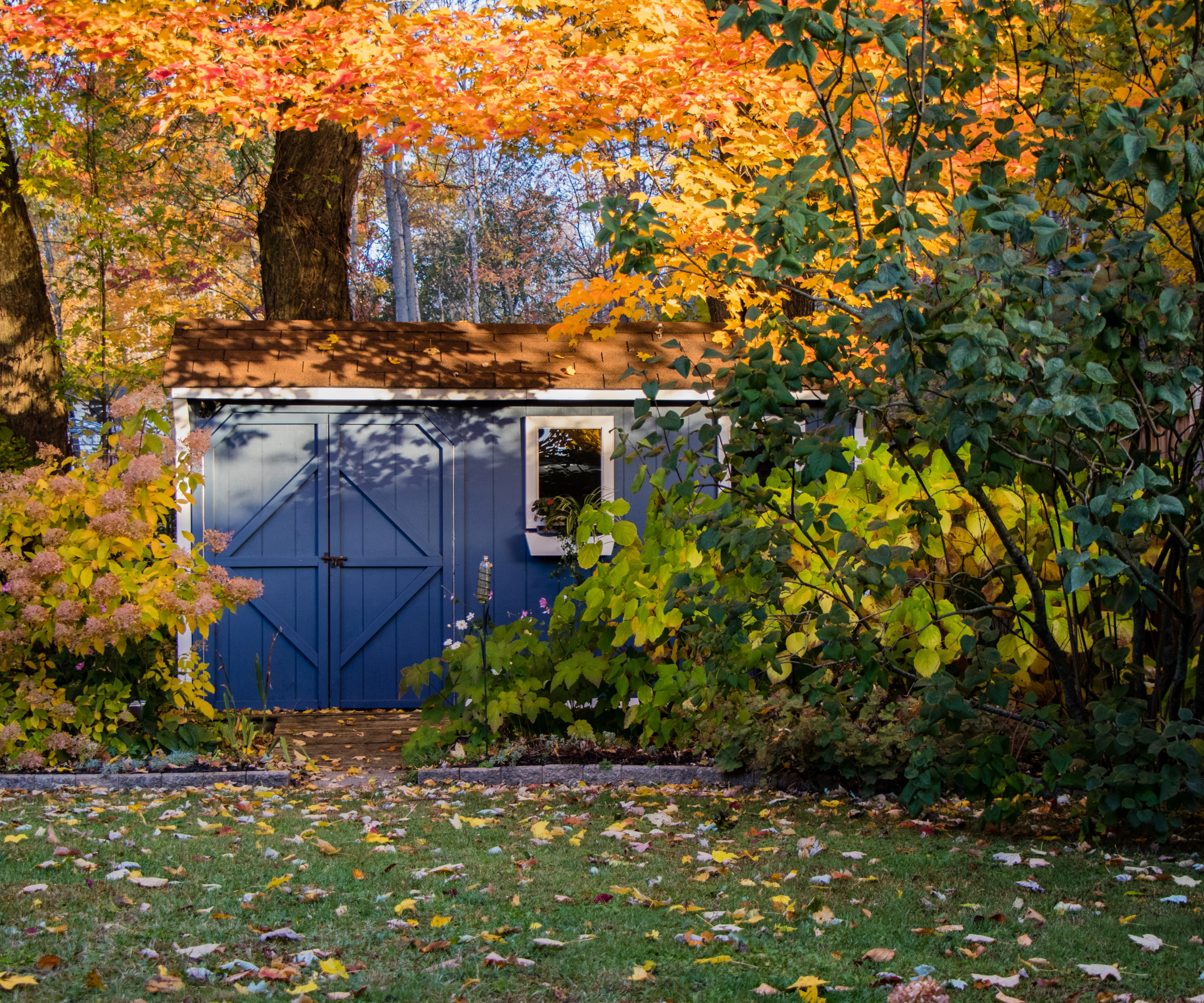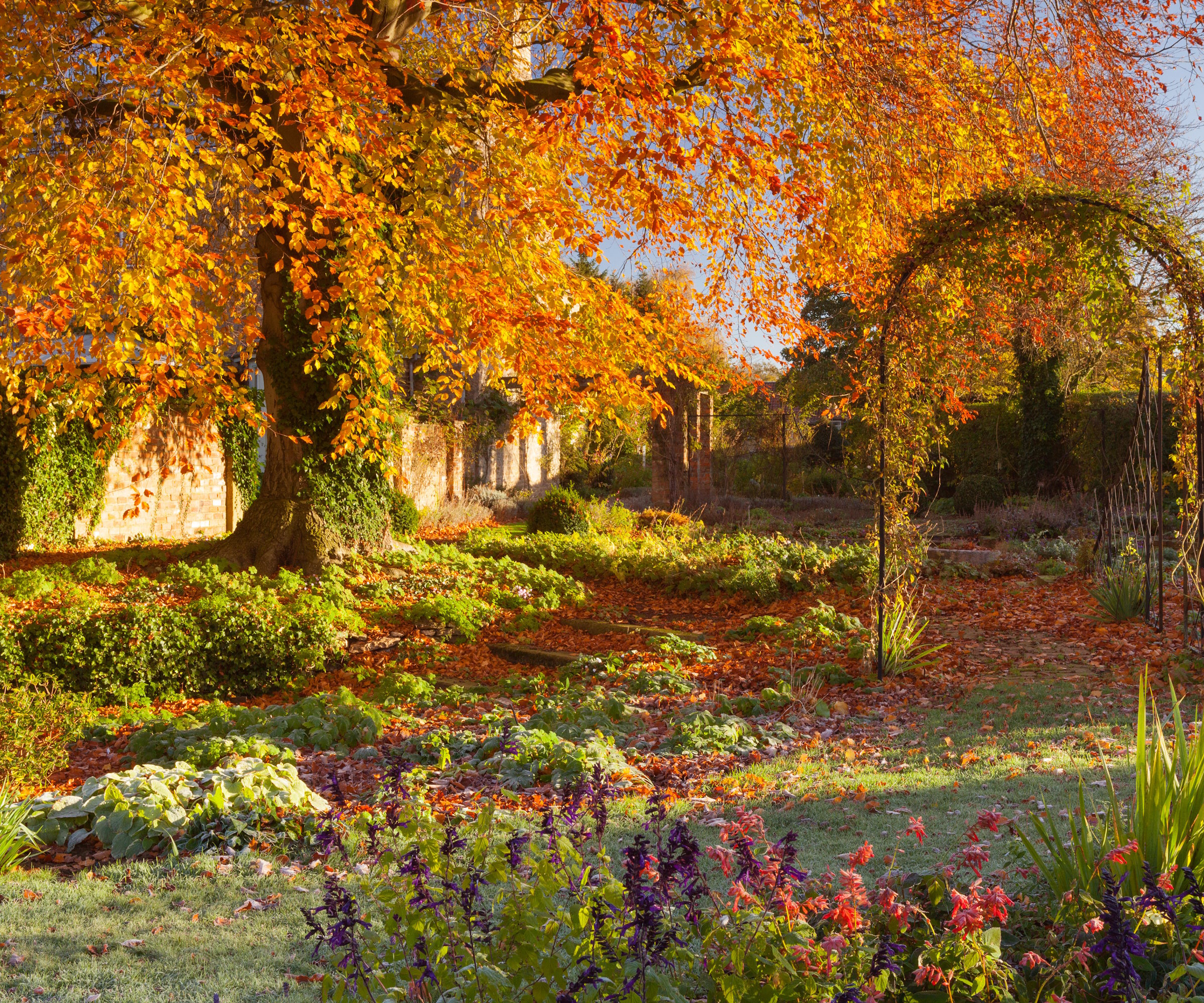
I don't know about you, but now the fall months are here my attention has turned to a yard tidy up. With fallen leaves everywhere, spent blooms hanging onto their last days, and my lawn needing a last mow before winter, it's not looking the neatest out there right now. But, I'm restraining myself from doing a complete overhaul, as over-tidying your yard in fall is bad for hibernating wildlife.
It's something you should keep in mind if you want to prioritize eco-friendly garden ideas in your yard and if you have a wildlife garden that gets lots of visitors. More specifically, the likes of hibernating frogs, reptiles, and even some insects can be affected by the removal of garden debris during hibernation season.
This does pose the problem of knowing just how much to tidy in your yard in fall and what you should leave be. To help you out, I've gathered advice from wildlife experts who share why over-tidying your yard in fall is bad for hibernating wildlife, which creatures are affected, and what you should leave in place for them.

Why Over-Tidying Your Yard is Bad for Hibernating Wildlife
Before jumping in with the details of why you should avoid over-tidying your yard this fall, you may be wondering which wildlife tend to hibernate in a yard setting.
Of course, there is a large number of animals and insects that hibernate (or perform a similar form of overwintering) in gardens come winter, but to name a few of the most common in US backyards:
- Frogs and toads
- Reptiles, like snakes and lizards
- Ladybugs
- Some types of bees and butterflies
What to Leave in Your Yard for Hibernating Wildlife

'In the fall, after everything has bloomed and the leaves are falling, the left behind organic material becomes critical and needed habitats for hundreds of different species,' says David M. Burrows from pollinator project company, Arkearth.
David notes the number one way to stop over-tidying in fall for hibernating wildlife is not collecting all fallen leaves. The likes of toads often hibernate under leaf piles, even covering the entrance of their burrows with fallen leaves.
Likewise, beneficial insects and important pollinators like ladybugs and some butterflies (like the Mourning Cloak butterfly) may cluster under fallen leaf piles. Even queen bumblebees use fallen leaves for protection when hibernating by burrowing solitary in loose soil.
Of course, if you aren't keen to have leaves strewn all over your yard, you can create specific wildlife leaf piles. Do this by using this leaf collector from Amazon and creating intention piles for wildlife in desired spots of your yard.
As for dead plant matter, like logs and woody stems, it may surprise you to learn it's the perfect spot for mason bees and carpenter ants to settle down for the coldest months.
'They make holes in decaying fallen limbs and logs. These features become a safe haven for dozens of insect species for the cold months of winter,' David says. 'The holes and cavities in deadwood are like apartments where bees, caterpillars, ladybugs, and eggs are kept safe for spring,' he explains.
The same goes for many of the best plants for seedheads and spent blooms.
'Hollow stems are winter homes for bees,' notes Siobhan Shaw, sustainable gardening expert and founder of Growing to Give. 'Plus, on a frosty morning they catch the light in a way that is surprisingly beautiful,' she adds.
And while it is important for lawn health to do a final mow before winter, allowing it to remain long in some areas is vital for wildlife overwintering in your yard.
'Letting some areas of grass grow a little longer can support local wildlife by offering cover for insects, frogs, and small mammals looking for shelter,' says wildlife expert and co-host of Mutual of Omaha's Wild Kingdom, Peter Gros.
'Even just leaving a patch or two to grow wild can make a big difference. You’ll be amazed how quickly nature moves back in when we give it a little space,' he says.
FAQs
Do All Birds Hibernate?
No, the majority of birds do not hibernate. The one exception is the Common Poorwill, a North American nightjar. Instead, the majority of birds migrate to southern regions where it's warmer. This includes the hummingbird migration, and there are actually lots of ways you can help overwintering hummingbirds.
Now that you know why over-tidying your yard in fall is bad for hibernating wildlife, you might be keen to also help and attract wildlife to your yard in fall. There are lots of things you can do, including incorporating the below features:
This bug hotel can provide some essential shelter and warmth to many beneficial insects over fall and winter.
Use this bird bath heater to stop your bird bath freezing in winter. Birds still need water for bathing and hydration during the coldest months.







